Mount Fansipan is the highest mountain in Vietnam and Indochina peninsula, located in the Hoang Lien Son mountain range. It was once only visited by adventure seekers fit enough to make the strenuous hike, but now this mountain offers a few different experiences for all types of travelers. Regardless of the new tram that brings people to the summit of this large peak, you should make the trek to meet travelers, experience adventure, and talk with locals.
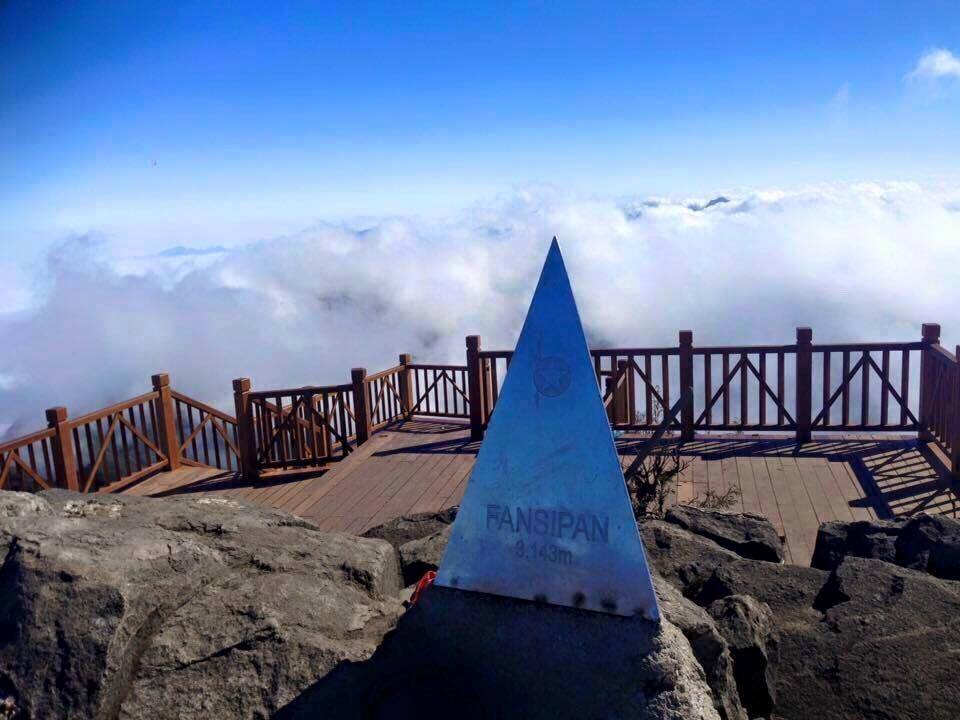
There is actually more infrastructure now, and although the prices have gone up in recent years (from 60 USD to the cheapest being around 120 USD) various trekking packages make it easier on the traveler, with porter services, and gear. However, you can still choose to do this trek on your own (with a guide) and even opt for trails that are more difficult but with fewer tourists.
First, you have to get from Hanoi to Sapa. There are four options: bus, train, private car/bus, or your own rented motorbike. We have written a very helpful and thorough guide that outlines these options here. If you are really looking for an adventure and you have time to discover Vietnam, then make this trip complete by renting your own motorbike!
Once you are in Sapa, you will need a place to stay; check out the 10 best accommodations in Sapa and decide whether you should stay in town or with a homestay here. When you make arrangements, check to see if these places will allow you to store your things or bigger packs and suitcases so you don’t have to worry about lugging around heavy baggage.
Once you are in Sapa, the fun begins!
Contents
Climate: When to Go
It is very important to research weather and when to visit various places in Vietnam as the rainy season can put a gloomy mood on things. With Mount Fansipan, you will be trekking in part for the gorgeous views of the top and Sapa valley but you won’t see these views if it’s cloudy and rainy. You might also be freezing when you get there.
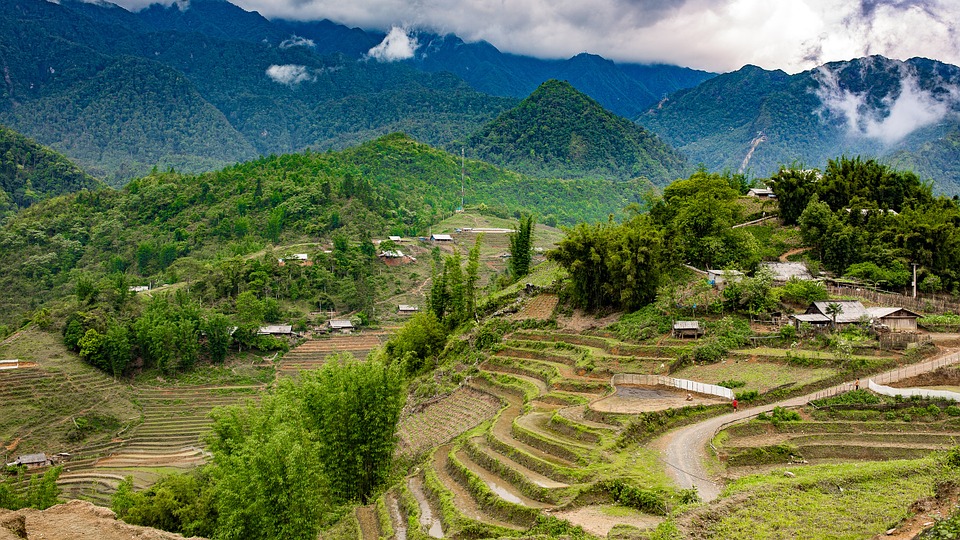
For the most ideal conditions, make the trek between October and April. During the summer, it can rain and make the trail treacherous even with good hiking shoes. However, December and January can be quite cold, the peak has even seen some snow! If you are in Hanoi and have a flexible schedule, I suggest watching the weather in order to ensure the best experience. Sapa is a far hike in of itself, the trek even longer, so make sure the weather conditions are ideal.
Pick What is Best for You
There are several options for all types of travelers that allow you to see the beautiful summit of Mount Fansipan. It depends on your desired level of adventure, fitness, and time frame. I will break it down for you.
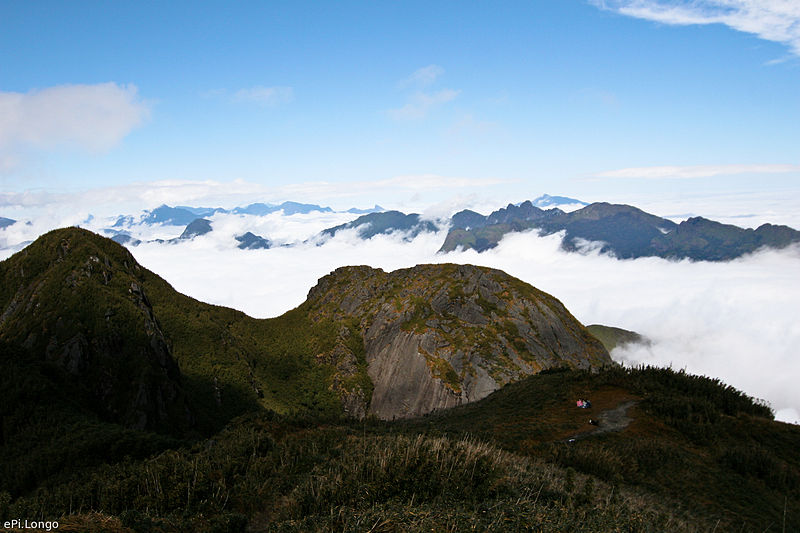
Treks range from one to four days. If you want to complete the trek in one day, you should be ready to go early with your things ready and you should be in good shape. I suggest the two-day, one-night option as it gives you ample time to complete the trek, allows you to converse and connect with fellow hikers and guides, and you can better acclimate to the altitude change. The three-day trek obviously gives you even more time, and if you haven’t exercised in a while or you feel reluctant as to whether the distance is too long, then choose this option.
There are also three trails that reach the summit, all with different levels of difficulty and distance:
- Tram Ton: This is a gradual trail that is most used by tourists, therefore it has the most people. The distance between the beginning point, at about 1,500 meters, and the summit is 11 kilometers. This trail can be accomplished in one day or two days. Keep in mind that while this is the most used trail, it is still physically demanding. Many travelers report taking the tram down because they are too tired to make the trek back. This can also save you some time on your itinerary.
- Sin Chai: This trail is shorter but it’s mainly for adventure seekers. It’s treacherous and hikers often report losing the correct path. The distance from beginning to end is about nine kilometers but different guiding groups take different paths. You may need two or three days to complete this trail.
- Cat Cat: This is the longest trail but it has the best scenery. The distance from the beginning to the summit is around 20 kilometers. This trail usually takes around three or four days to complete.
*Do keep in mind that the Sin Chai and Cat Cat trail are considered dangerous.
You can also choose to do a private or group trek. There are pros and cons to both, but I will say that I have met many lovely people by doing group treks in Vietnam!
Pros: With a group, you get to make friends, have nightly conversations and entertainment with cool people, and have a social time. A private tour allows you to make your own plans (do you want to wake really early to catch the sunrise at the summit?) and set your own pace.
Cons: With a group, you could either be the fastest or slowest link and you might get a bad seed in your crew. By yourself, you may find the nights boring or lonely and there will not be people to push you.
Guides
You might give yourself a headache researching guides online before committing to Fansipan. There is limited and sometimes outdated information online related to price, availability, and even the existence of these trekking companies since so much has changed in the past two years.
In order to avoid complications, I suggest booking a trek with a company in Hanoi or through your accommodation host. They can walk you through pricing, what you should expect, and they can conduct all communication with trekking guides. Your accommodation will also be incentivized to help you find a good tour in order to ensure quality reviews later. Companies typically pay their guides around 500,000 VND for a full day hike, this is for a very basic tour. Obviously, if you pay up, you should receive more engaged guides and better food. Both of these options should limit your time spent online researching and digesting a large amount of information. Even if the agency or accommodation makes a commission, this extra money should ensure that you have quality guides. Make sure you are very clear about which trail you want to take.
If you are really averse to guides, keep in mind that they arrange permits and register your hike with local authorities. It costs 500,000 VND per person for a one-day permit and 700,000 VND for two days. These fees are collected for park maintenance and rest stop access. There are also guards/rangers at some of the trails and campsites so you will either need to bribe or lie to them, and I suggest neither. This process changed after an incident involving a hiker who died in 2016. All in all, it is not worth getting lost, as there are scarce signs on the trek, for a minimal amount of savings.
With all of the above fees, a tour company will probably quote you around 1,450,000 VND (this would be if your group is about two people). This covers guide fees, park fees, and pick up and drop off taxis (this will depend on location too).
The Trail
Most people who book guides, regardless of specifying which trail, will be taken on Tram Ton trail. Make sure you are very clear about which trail when it comes to this stage. Most of the information online details the experiences of hikers on the Tram Ton trail. This is also because the Sin Chai and Cat Cat trail are pretty dangerous as the path is not distinct and it leads you up steep faces. Most guiding companies and guides will take you on Tram Ton because of this.
You will be picked up early for your departure, probably around 7:00 or 8:00 AM because most guides assume it will take the whole day to reach the campsite. However, even if you’re a little fit, it will take much less time but that also depends on how many photos you want to take! Stay awake for the drive over Tram Ton pass, the highest mountain pass in Vietnam. You will see waterfalls and plenty of greenery to inspire your trek up the trail. You will most likely be accompanied by local porters and cooks that carry some of the supplies. Try to communicate, they enjoy speaking English and I have had some amazing porters teach me a few things through facial expressions and pointing.
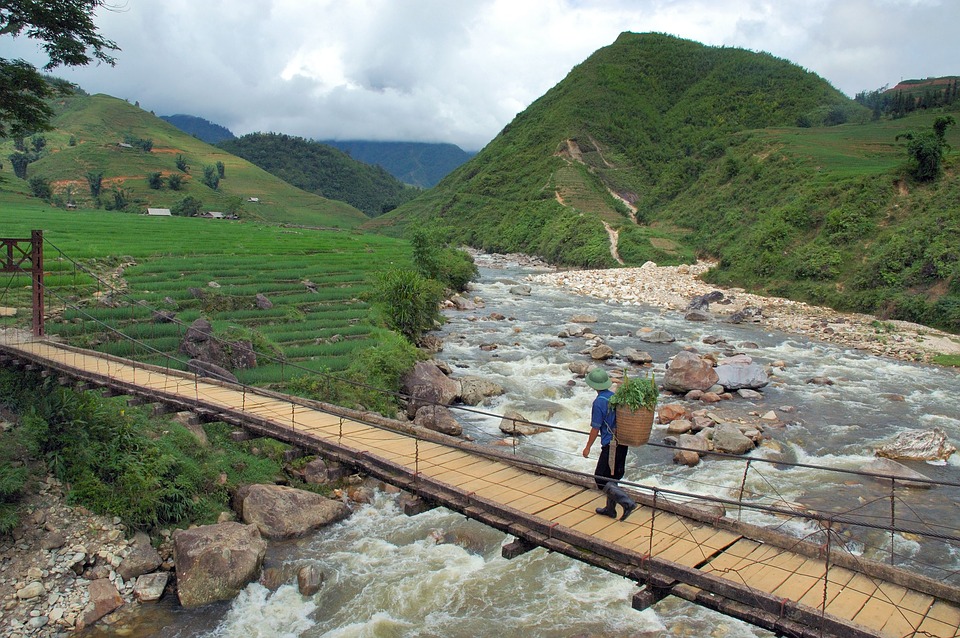
A lot of the path has been cleared for tourists. Sometimes there are paved steps, ladders, and a very clear path. There are many roots and sometimes you will face the elements as well. Although you might have hoped for more adventure, appreciate the distinctly local experiences as unique. You will stop for lunch prepared by the porters. In my experience, these lunches are local, simple yet delicious. But don’t eat too much! You still have to make it to basecamp for the night if you are doing a multiple-day tour. For the night, you will stop at simple cottages that hold seven, another cooking house, and rough facilities as restrooms.
Basecamp is at 2,800 meters, so if you struggle with altitude sickness be sure to drink a lot of water when you arrive. Keep in mind that there is no electricity, the toilets are squat toilets (so bring toilet paper), and if you are doing this trek in the winter, the water will be very cold. If you are a light sleeper, you might also not get much sleep as the walls of the buildings are very thin (bring earplugs). If you are in a group trek, you might think about bringing a deck of cards and if you are alone, maybe a book!
I highly suggest waking up early (close to 4:00 AM) in order to make the sunrise at the summit and avoid all the tourists from the tram car. This will be a rewarding experience as the sun breaks over the mountains. You will have sumitted the 3,143 meters it takes to reach the “roof of Indochina”!
You can of course do this trek in one day as well! The top might feel anticlimactic with the tourists unloading the tram, but I like to think of the experience as the adventure to reach the top.
As I stated above, the Sin Chai trail is the most treacherous due to the sometimes barely visible path and the overgrown plants. It also steeply climbs and has the most elevation gain out of all three trails. It begins in the village of Sin Chai, the trail meanders through thick vegetation where hikers have reported losing the trail and then stretches into a more defined, wider hiking trail. You will be hiking through bamboo valleys and thick forests. As you ascend onto an open ridge, you will see the infamous cable car and the tourists inside. The hike remains easy until you must cross a small creek but afterward, the steep trail begins.
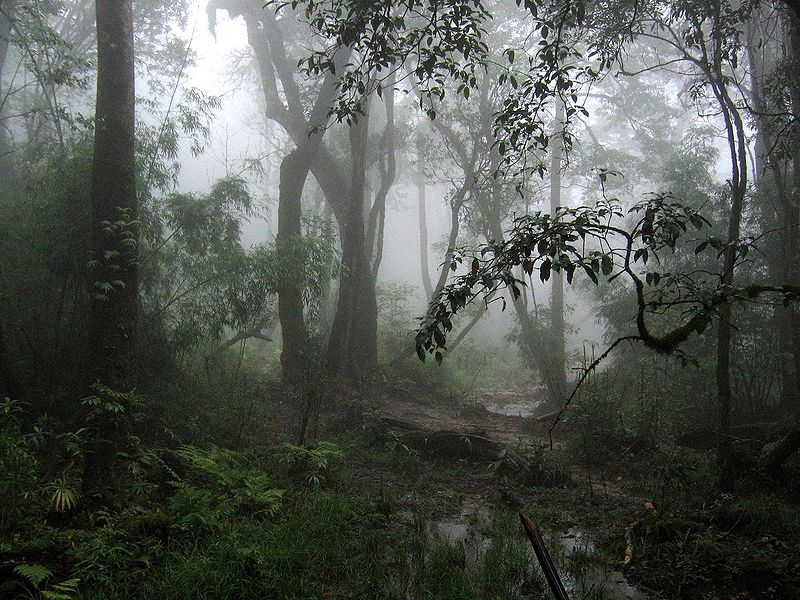
Be careful at this point as there are many ledges and loose rock. You will have to hold onto roots and plants, so make sure these are firmly anchored to the ground. Although this route is the shortest, keep in mind that it steeply gains elevation and you must maneuver around certain elements of the hike.
Cat Cat trail is beautiful. You begin hiking through rice paddies and small villages, including Cat Cat and across the Muong Hoa River. Your first basecamp is not in a dirty, large house but rather in a tent or bamboo hut. The scenery changes the next day, to old pine forests and bamboo clearings. You might even spot a goat or langur monkey. You get to sleep by a quiet mountain spring and hopefully the clouds part for a view of the stars.
The third day is generally summit day and the following day is a long descent down. This is the most rewarding trail if you have had Mount Fansipan in your sights for a long time. You get to hike through the H’mong ethnic minority villages and test your trekking legs on this one, the summit almost becomes an afterthought and the adventure there becomes the reason why you did it.
Pro tip: Like I stated before, if you need to save time or your knees, take the tram down!
Cable Car
If you don’t like hiking or your budget or body inhibits your adventure level, there is always the cable car option. To some of you, this Fansipan Legend Cable Car may also seem like an adventure since it spans 6,292.5 meters, making it the longest three-rope and non-stop cable car out there. Not only that, it also holds the record for highest elevation gain with 1,410 meters for three-rope cable cars. It sweeps through clouds with views over Muong Hoa Valley, and through the magnificent peaks of Hoang Lien Son Range.
You still have to summit Mount Fansipan by walking about 600 stairs to the very peak after you exit the car. A roundtrip ticket costs 600,000 VND. For those of you who can’t decide whether to trek or ride through the clouds, consider both! Hike to the top and then ride the cable car down. Although this is a new modern car, it still provides sleek transportation to a place that used to be accessible only to those who could make the trek. Now every traveler can feel the true grandeur of this Sapa peak.
Trekking Packing List
Your packing list will vary depending on the season. Obviously, December and January will require warm clothes. The ideal season to trek is from April to May and will require fewer clothes. Nonetheless, here is a list of things to bring on your trek:
- Good hiking/trekking shoes with excellent traction and support
- Two pairs of good hiking socks (one you should use at night/next morning to keep feet warm)
- Pair of lightweight sandals you can wear with socks at night
- Hat, gloves, maybe scarf if needed at night
- Warm fleece or sweater for night and if you get cold during hike
- Rain jacket (is a must) and you might think about a cover for your pack
- You should be wearing lightweight and moisture-wicking clothes
- Medicines: think about your stomach, maybe bring along a pain reliever
- Toiletries, maybe even a little towel
- Sunscreen and mosquito repellent
- Gardening gloves (optional- but you don’t have to worry about any bugs and they add good grip, some tours will provide these for you)
- Extra energy snacks (like chocolate)
- Zip-lock plastic baggies for phones and electronic personal items to be safe
- Book or cards for basecamp
- Earplugs if you are a light sleeper
Check to make sure guides have provided:
- Sleeping bag and pad/mattress
- Headlamp
- Toilet paper
- Gardening gloves
- Water, food
Also keep in mind that you should have the things that you want along with you during the hike in your own pack, and things you want carried by porters in another pack. You might want a light sweater, rain jacket, snacks, and water with you.
Conclusion
Mount Fansipan is a rare adventure of Vietnam. Sapa is also a natural wonder and if you have time, you should definitely consider making the trek. You won’t regret it! Take an easy-going spirit, quick feet, and some water and be on our way!
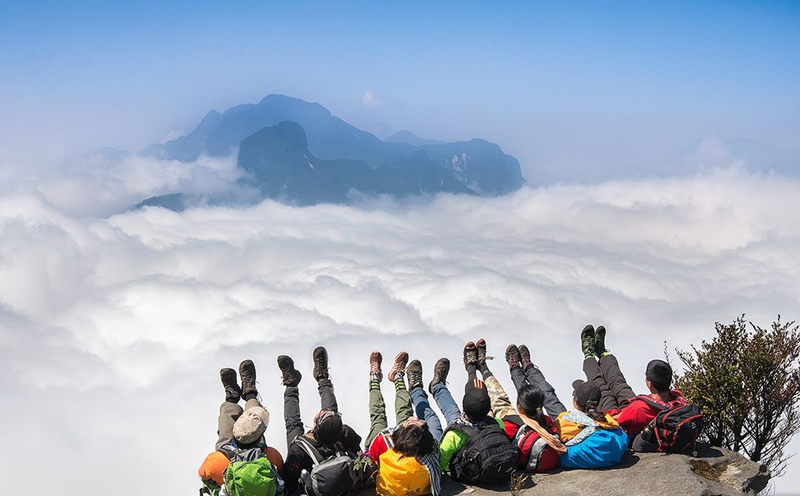
If you have more questions about Sapa itself, check out our other articles. We have a comprehensive guide about what to see and do in Sapa here and where to stay in Sapa here. A shopping guide that discusses the special local goods and an overall trekking guide are there for you too!
Looking for more awesome things to see, do and eat in Vietnam? Check out our other comprehensive articles at the 4U Trip
